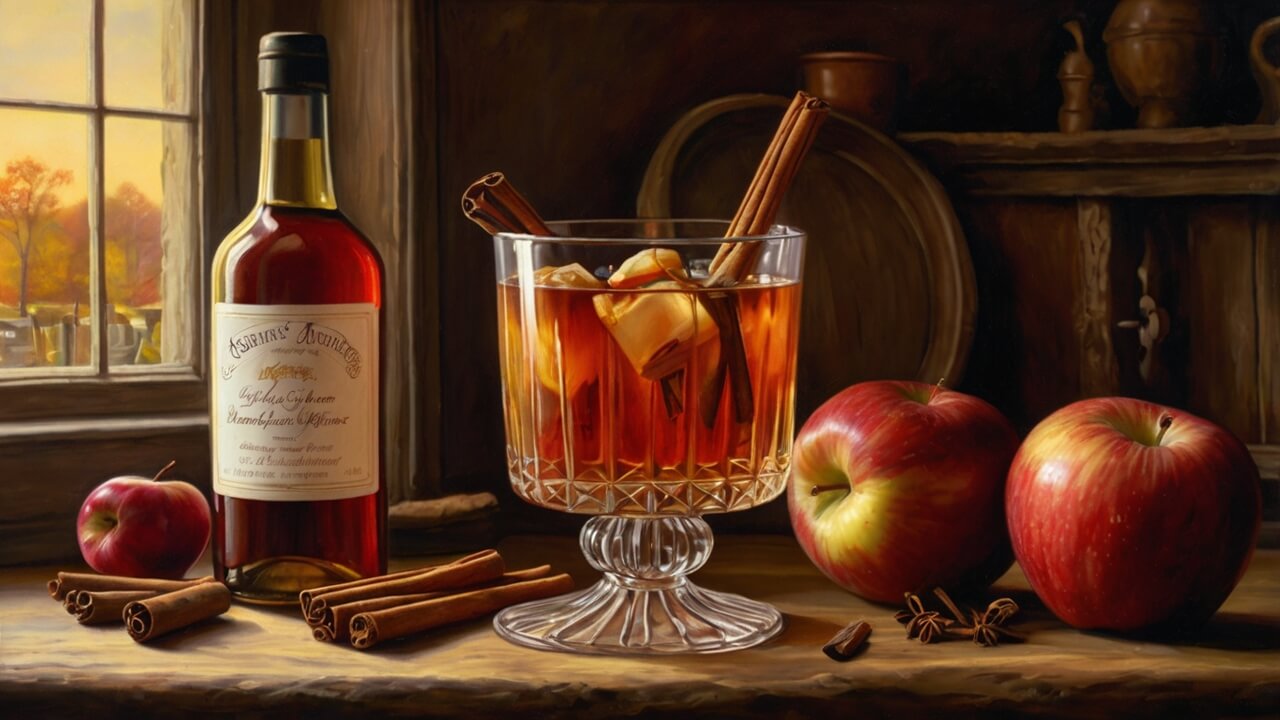As the crisp autumn air ushers in cozy sweaters and crackling fires, there’s no better way to embrace the season than with a glass of homemade apple spice wine.
This delightful beverage captures the essence of fall, with its rich, ruby hue and warm, inviting aromas of cinnamon, cloves, and nutmeg.
Making wine at home is a rewarding experience that allows you to customize every aspect to suit your taste preferences.
From adjusting the spice levels to experimenting with different apple varieties, you have complete control over the final product. Not only is homebrewing a fun hobby, but it also offers cost savings compared to purchasing commercial wines.
Imagine serving your own signature apple spice wine at holiday gatherings or simply enjoying a glass by the fireplace on a chilly evening.
The process may seem daunting at first, but with the right guidance and a little patience, you’ll soon be sipping on a delicious, homemade creation that embodies the flavors of the season.
Ingredients and Equipment
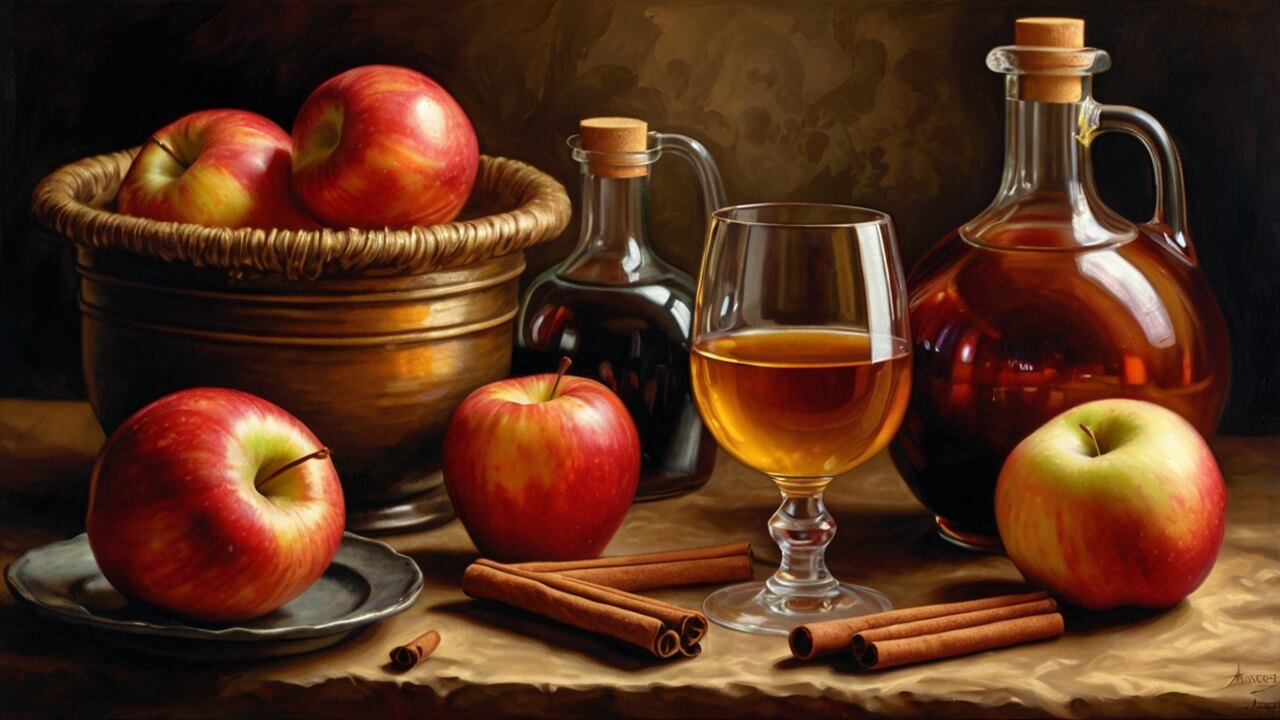
To make a delicious batch of apple spice wine at home, you’ll need the following ingredients:
Ingredients:
- Apple Juice: The star of the show! Look for high-quality, preservative-free apple juice for the best flavor. You’ll need around 5 gallons (19 liters) of juice.
- Sugar: White granulated sugar is commonly used. You’ll need approximately 3-4 pounds (1.4-1.8 kg) to reach the desired alcohol content.
- Yeast: A wine yeast strain like Montrachet or Premier Cuvée is ideal for this recipe. These yeasts can handle the higher alcohol levels and enhance fruity flavors.
- Yeast Nutrient: This helps the yeast thrive and ferment efficiently.
- Pectic Enzyme: Optional, but it can help clarify the wine by breaking down pectin in the apple juice.
- Spices: The spice blend is what gives this wine its signature flavor. You’ll need cinnamon sticks, whole cloves, and freshly grated nutmeg.
Equipment:
- Fermentation Bucket: A 6-7 gallon (23-26 liter) food-grade plastic bucket with a lid and an airlock.
- Siphon Hose and Racking Cane: For transferring the wine during racking and bottling.
- Glass Carboys: You’ll need at least two 5-gallon (19 liter) glass carboys for the secondary fermentation and aging.
- Bottles: Enough clean, sanitized bottles to hold your finished wine. Wine bottles with corks or caps work well.
- Bottle Filler: A handy tool that makes bottling much easier and cleaner.
- Sanitizer: A no-rinse sanitizer like Star San or One Step is essential for keeping everything clean.
- Hydrometer and Test Jar: Used to measure the sugar content and monitor fermentation progress.
- Bottle Capper/Corker: Depending on the type of bottles you use, you’ll need a capper or corker to seal them.
Having all the necessary ingredients and equipment on hand will ensure a smooth homebrewing experience and help you craft a delightful apple spice wine to enjoy. Don’t forget to sanitize everything thoroughly before starting!
Preparing the Must
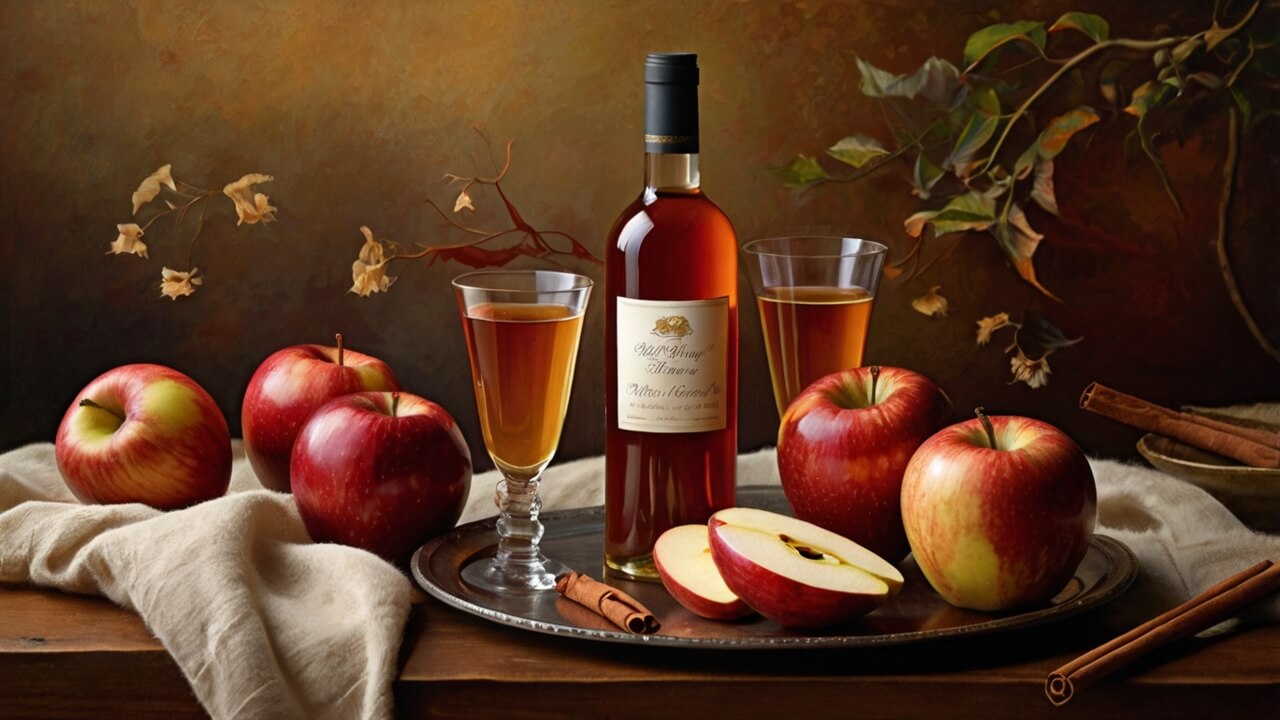
Preparing the must, or the unfermented juice mixture, is a crucial step in making apple spice wine. Follow these step-by-step instructions carefully to ensure a successful fermentation process:
- Sanitize your equipment: Before you begin, thoroughly sanitize all equipment, including the fermenter, siphon, and any utensils you’ll be using. This step is essential to prevent contamination and ensure a clean fermentation environment.
- Combine the ingredients: In a large pot or brew kettle, combine the apple juice, sugar, and any additional ingredients like spices or fruit concentrates. Stir the mixture well to help dissolve the sugar.
- Heat the must: Gently heat the must to around 160°F (71°C) while stirring constantly. This step helps dissolve the sugar more effectively and pasteurizes the mixture, reducing the risk of wild yeast or bacteria contamination.
- Check the sugar concentration: Use a hydrometer to measure the specific gravity of the must. This reading will help you determine the potential alcohol content of your finished wine and ensure you’ve added the correct amount of sugar.
- Cool the must: Once the sugar is fully dissolved, remove the pot from the heat and allow the must to cool to around 70-75°F (21-24°C). This temperature range is ideal for adding the yeast.
- Aerate the must: While the must is cooling, aerate it by vigorously stirring or using an aeration tool. This step introduces oxygen, which helps the yeast multiply and kickstart the fermentation process.
- Transfer to the fermenter: Once the must has cooled to the appropriate temperature, carefully transfer it to your sanitized fermenter, leaving enough headspace for the fermentation to occur.
Pro Tip: To ensure the sugar is fully dissolved, you can use a refractometer to measure the sugar concentration instead of a hydrometer. This tool provides a more accurate reading and eliminates the need for temperature adjustments.
Sanitization Tip: Use a no-rinse sanitizer like Star San or Saniclean to effectively sanitize your equipment without leaving any residues that could affect the fermentation process.
By following these steps meticulously, you’ll have a well-prepared must, ready for the addition of yeast and the exciting fermentation process to begin.
Initial Fermentation
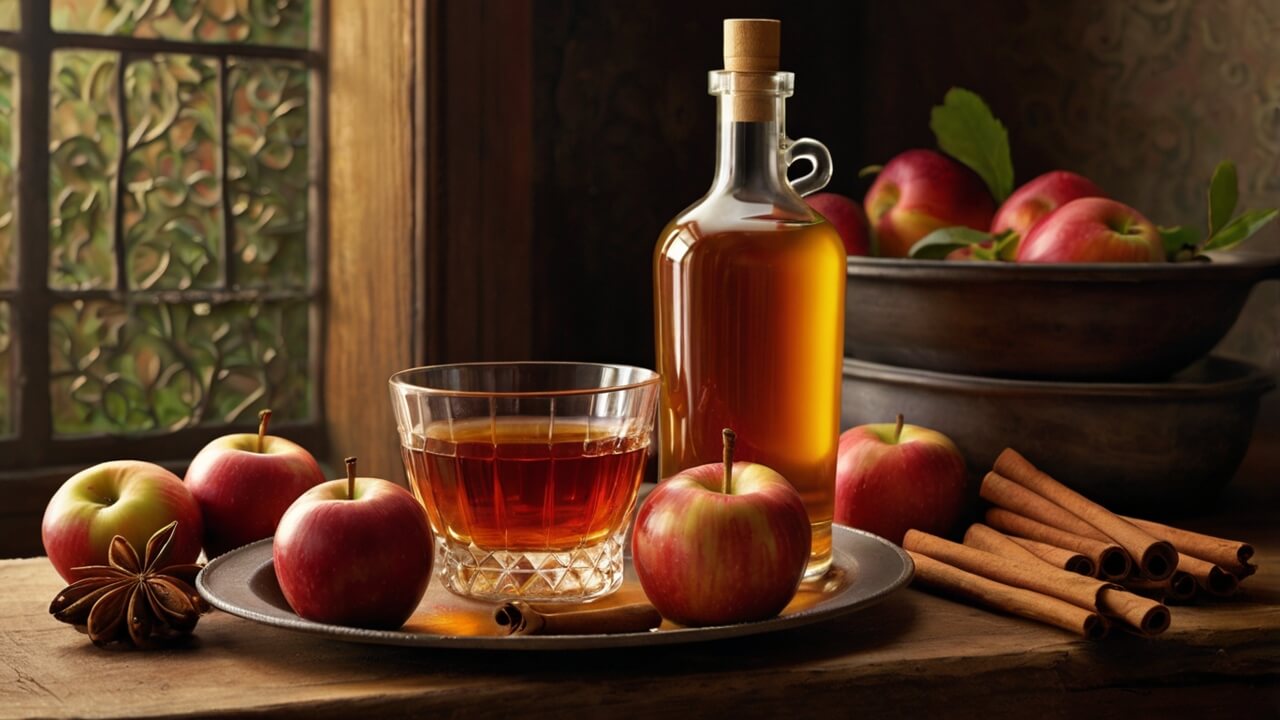
Once the must is prepared, it’s time to kickstart the fermentation process by adding the yeast and spices that will transform the sugary liquid into your delicious apple spice wine. Here’s how to proceed:
Adding the Yeast
- Rehydrate the champagne yeast by sprinkling it over a small amount of lukewarm water (around 100-105°F) and letting it sit for 15-20 minutes. This step helps revive the dormant yeast cells.
- Once the yeast is rehydrated, gently stir it into the must until fully incorporated.
Adding the Spices
- Tie the cinnamon sticks, cloves, and nutmeg in a muslin bag or cheesecloth, creating a spice sachet.
- Gently drop the spice sachet into the must, ensuring it’s fully submerged.
The Fermentation Process
Fermentation is the magical process where the yeast consumes the sugars in the must and converts them into alcohol and carbon dioxide. During this stage, you’ll notice the following:
- Bubbling and Foaming: Within 12-24 hours, you should see bubbles forming and a foamy layer on the surface of the must, indicating that fermentation has begun.
- Temperature Control: Maintain a consistent temperature between 65-75°F for optimal fermentation. Temperatures outside this range can stress the yeast and affect the final flavor.
- Duration: The initial fermentation phase typically lasts 5-7 days, during which the yeast will be highly active, producing a vigorous fermentation.
Monitoring Fermentation
Use a wine hydrometer to monitor the specific gravity (SG) of the must throughout fermentation. As the yeast consumes the sugars, the SG will decrease. Fermentation is complete when the SG readings stabilize for 2-3 consecutive days, indicating that all fermentable sugars have been consumed.
Remember, temperature control is crucial during this stage. Fluctuations can lead to off-flavors or a stuck fermentation. Maintain a close eye on the process and be prepared to move to the next step once fermentation is complete.
Secondary Fermentation
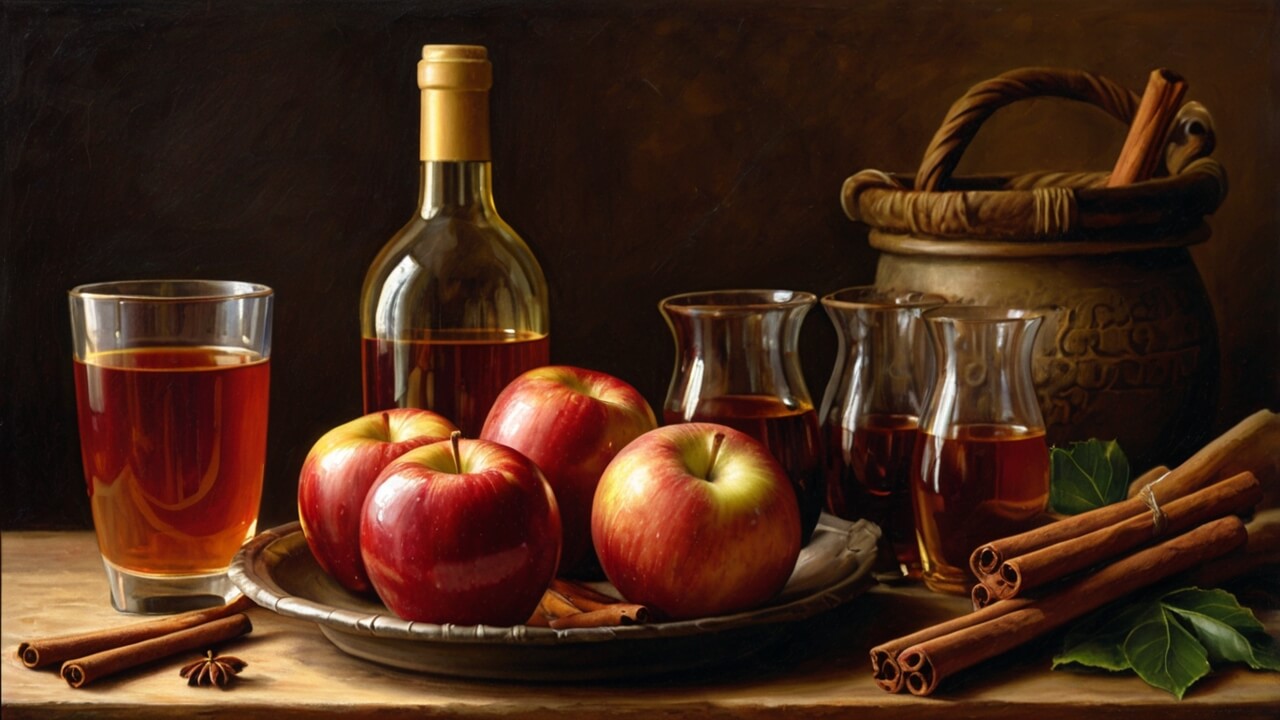
After the initial fermentation is complete, typically within 5-7 days, it’s time to rack the wine into a secondary fermenter. Racking involves carefully siphoning the wine off the spent yeast and sediment into a clean, sanitized fermentation vessel.
This crucial step prevents the wine from developing off-flavors and allows the fermentation process to continue in a cleaner environment.
When racking, minimize air exposure as much as possible. Oxidation can lead to a flat, stale flavor in your wine. Use a fermentation-grade siphon and tubing specifically designed for homebrewing.
Gently insert the siphon into the fermented must, allowing the wine to flow into the new vessel. Leave behind as much of the sediment as possible.
To enhance the spice flavors in your apple spice wine, consider adding a spice pack or sachet to the secondary fermenter. This can include additional cinnamon sticks, whole cloves, and a dash of freshly grated nutmeg.
The extended contact time will allow the spices to infuse their warm, aromatic notes into the wine. Another option is to lightly toast or char a portion of the spices before adding them to the secondary fermenter.
This process, known as oaking, can impart deeper, richer flavors reminiscent of oak-aged wines. Be cautious not to overdo it, as too much charred spice can overwhelm the delicate apple notes.
During the secondary fermentation, monitor the wine closely and maintain a consistent temperature between 65-75°F (18-24°C).
This temperature range promotes a slow, steady fermentation, allowing the wine to develop its full flavor profile. Fermentation can take several weeks, so be patient and allow the process to unfold naturally.
Bottling and Aging
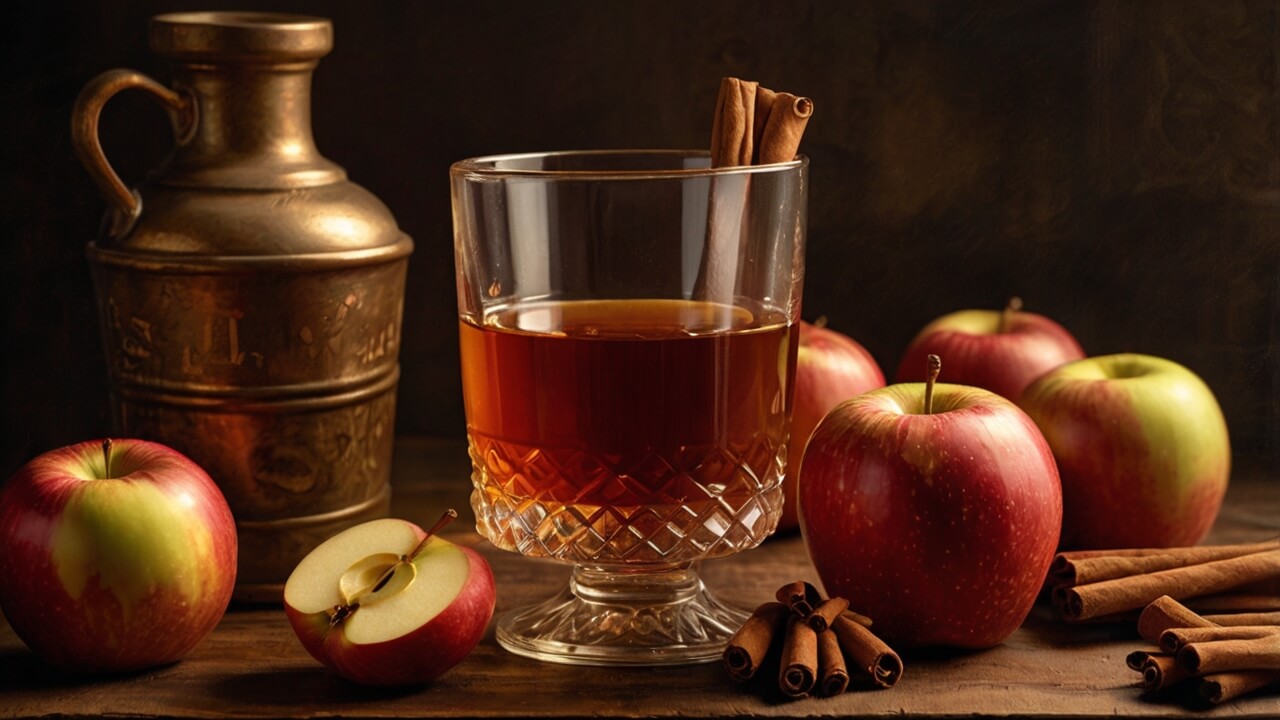
After the secondary fermentation is complete, typically around 4-6 weeks, it’s time to bottle your apple spice wine. Proper bottling and aging techniques are crucial for ensuring your wine reaches its full potential and develops the desired flavors.
Bottling Instructions:
- Sanitize: Thoroughly sanitize your bottles, siphon tubing, and any other equipment that will come into contact with the wine. This step is essential to prevent contamination and ensure a stable, long-lasting wine.
- Siphon: Using a sanitized siphon tube, carefully transfer the wine from the secondary fermenter into sanitized bottles, leaving about an inch of headspace at the top. Avoid splashing or agitating the wine too much, as this can introduce unwanted oxygen.
- Cork or Cap: If using cork closures, make sure to use a properly sanitized corker and high-quality corks. For screw-cap bottles, ensure the caps are sanitized and tightened securely.
- Label and Date: Clearly label your bottles with the wine type, batch number, and bottling date. This information will be invaluable when tracking the aging process and determining when to consume your wine.
Aging Recommendations:
Aging is a crucial step in developing the complex flavors and aromas of your apple spice wine. Here are some guidelines for aging:
- Bulk Aging: Consider aging a portion of your wine in a sanitized glass carboy for an additional 3-6 months before bottling. This extended bulk aging can help the wine integrate flavors and mellow out any harsh notes.
- Bottle Aging: Most apple spice wines will benefit from at least 6-12 months of bottle aging, during which time the flavors will continue to evolve and harmonize. Store your bottles in a cool, dark place with consistent temperature and humidity.
- Tasting and Monitoring: Periodically taste your wine during the aging process to monitor its progress. The wine may go through various stages, initially tasting harsh or unbalanced before developing more refined flavors over time.
- Patience: While it can be tempting to consume your wine as soon as possible, resist the urge and allow your apple spice wine to age properly. The rewards of patience will be evident in the depth and complexity of the final product.
Remember, aging is an art and a science, and the optimal aging time may vary depending on your specific recipe, fermentation conditions, and personal preferences.
By following proper bottling and aging techniques, you’ll be able to enjoy a truly exceptional homemade apple spice wine that showcases the perfect balance of fruit, spice, and complexity.
Serving Suggestions
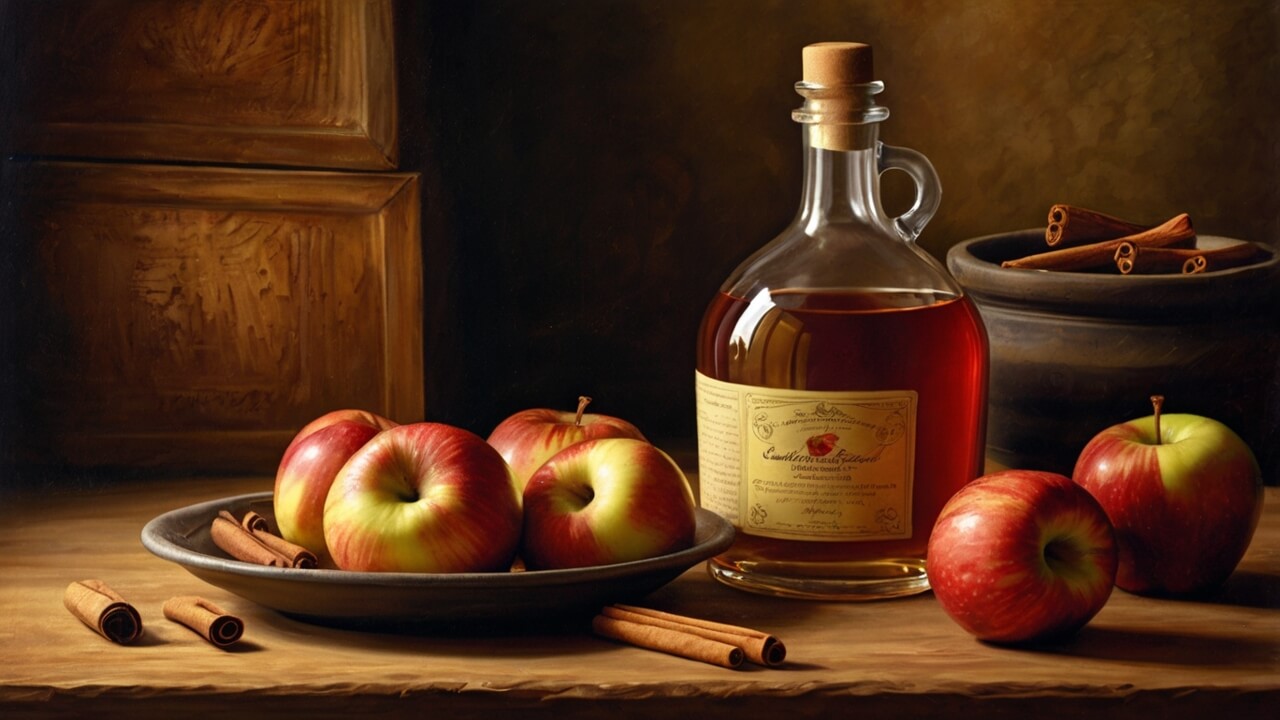
Making apple spice wine at home allows you to create a truly unique and festive beverage perfect for the fall and winter seasons.
Once your wine has aged to perfection, there are numerous ways to savor and showcase this flavorful homemade delight.
Pairing Suggestions: Apple spice wine pairs beautifully with a variety of foods, making it a versatile addition to any gathering or meal. Try serving it alongside autumnal dishes like roasted pork tenderloin with apples and herbs, savory pumpkin ravioli, or a hearty beef stew. The wine’s warm spices and fruity notes complement these rich, comforting flavors. For dessert, the wine is an excellent accompaniment to apple or pumpkin pie, gingerbread, or a selection of aged cheeses.
Presentation Tips: When serving your homemade apple spice wine, consider presenting it in elegant glassware to highlight its vibrant color and enticing aroma. Tulip-shaped glasses or wide-bowled red wine glasses are ideal for allowing the wine to breathe and release its full bouquet. For a festive touch, garnish each glass with a thin slice of apple or a cinnamon stick.
Adjusting the Recipe: One of the joys of homebrewing is the ability to tailor recipes to your personal taste preferences. If you prefer a bolder spice flavor, consider adding an extra cinnamon stick or a few more whole cloves during the secondary fermentation. For a sweeter wine, increase the amount of sugar in the must or add a touch of honey. You can also experiment with different spice combinations, such as incorporating star anise, allspice, or cardamom for a unique twist.
Troubleshooting and Tips
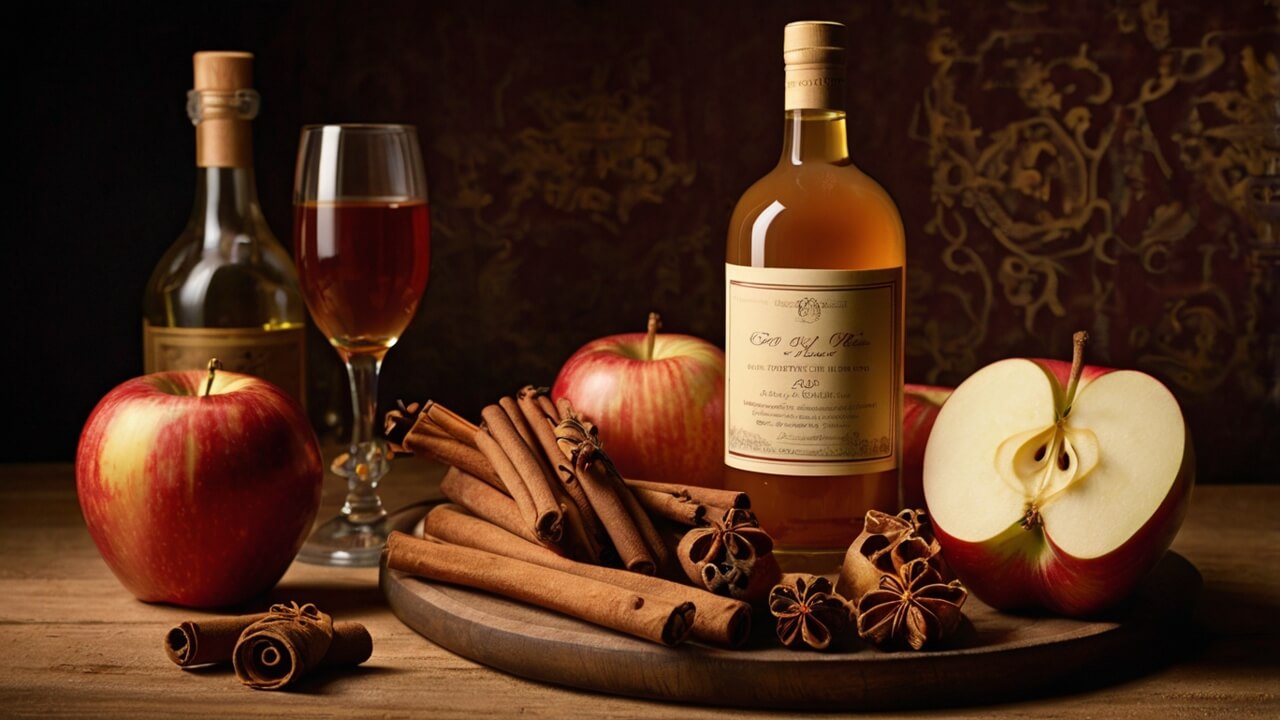
Homebrewing can be a rewarding experience, but it’s not without its challenges. Here are some common issues you may encounter when making apple spice wine, along with tips for addressing them:
Stuck Fermentation
If your fermentation seems to have stalled or slowed down significantly, it could be due to factors like temperature fluctuations, lack of nutrients, or an overly high alcohol content. To address this, try gently rousing the fermenter to reintroduce oxygen, or add a yeast nutrient to provide the necessary compounds for the yeast to continue fermenting.
Off-Flavors
Unpleasant aromas or flavors in your wine can be caused by bacterial contamination, oxidation, or the use of subpar ingredients. To prevent off-flavors, ensure proper sanitization throughout the process, limit air exposure during racking, and use high-quality, fresh ingredients.
Cloudy Wine
If your wine appears cloudy or hazy after fermentation, it may need additional clarification. You can try adding clarifying agents like bentonite or chitosan, or allow the wine to undergo extended aging, which can help the particles settle out naturally.
Exploding Bottles
This is a serious issue that can occur if the wine continues to ferment in the bottle due to residual sugar or yeast activity. To avoid exploding bottles, ensure that fermentation is complete before bottling, and consider adding potassium sorbate to stabilize the wine.
Tips for Beginners
- Invest in high-quality equipment and sanitize everything thoroughly.
- Follow the recipe closely, and don’t deviate until you’ve gained more experience.
- Be patient and allow the wine to ferment and age properly.
- Keep detailed notes on your process for future reference.
Tips for Advanced Homebrewers
- Experiment with different yeasts, spices, and fruit combinations.
- Consider aging your wine in oak barrels or adding oak chips for added complexity.
- Try blending different batches or vintages to create unique flavor profiles.
- Attend homebrewing events or join a local club to learn from experienced winemakers.
Remember, homebrewing is both an art and a science. With practice, patience, and attention to detail, you’ll be able to craft delicious apple spice wine that you can be proud of.
Conclusion
Crafting your own apple spice wine at home is an immensely rewarding experience that allows you to explore the art of winemaking while creating a delightful, seasonal beverage.
Not only does it provide a sense of accomplishment, but it also offers the opportunity to customize the flavors to your personal preferences and experiment with different spice blends.
One of the greatest benefits of homebrewing is the ability to control the ingredients and ensure that your wine is free from any unwanted additives or preservatives.
By following this recipe, you can produce a high-quality, flavorful wine that captures the essence of autumn in every sip.
Moreover, making your own wine can be a cost-effective endeavor, especially when you consider the premium prices often associated with artisanal or boutique wines.
With a little patience and attention to detail, you can create a truly unique and memorable beverage that will impress your friends and family.
So, embrace the joy of homebrewing and proudly share your apple spice wine creation with those around you.
Whether you choose to gift bottles to loved ones or serve it at festive gatherings, your homemade wine is sure to be a conversation starter and a testament to your culinary skills.

